Apple offers users a choice of a 13-inch MacBook Pro and a 13-inch MacBook Air for the entry-level model in its notebook line, but is there much difference between the two lines for the everyday user? Here's what it means to those new to Mac to go Air or Pro at the value end of the range.
Apple's MacBook lineup consists of four models, with three marketed as "Pro" models. The fourth is different, with the MacBook Air differing more than just the name.
The MacBook Air was originally marketed as a thin and light notebook for years. It was the ideal entry-level option for those new to Mac ownership. This was especially true if you wanted a compact and reasonably priced portable Mac, which offered all of the essential elements that you could need.
The "essentials" element was particularly true during the Intel era, as the highly space-limited nature of its construction made it hard for Apple to cool, and therefore slower speeds through throttling. This made it prone to use low-clock speed chips at the time, with chips running slowly by default to avoid any heat issues.
Add in that the MacBook Pro range was considered a workhorse that needed beefier processors and better graphical performance, and you could easily see there was a distinction between the Air and Pro ranges.
As Apple ushered in Apple Silicon, it discovered that it didn't have to deal with the same thermal problems as under Intel, as it was able to run fast without generating heat. In effect, it brought the MacBook Air up to the same sort of performance as the 13-inch MacBook Pro.
Later, Apple brought in the 14-inch MacBook Pro and 16-inch MacBook Pro, giving consumers considerably more performance and size options.
Nowadays, there's not that much of a difference between the 13-inch MacBook Pro and the MacBook Air. New users may look at the models and scratch their heads about what the differences actually are, since they seem quite similar in general.
It turns out there's still enough of a variation between the models for Apple to offer both Pro and Air options to consumers.
For this article, we will mainly focus on the similar-sized and similar-spec'd 13-inch models.
MacBook Pro vs MacBook Air: Physical differences
The signature feature of the MacBook Air at its introduction was that it's an impossibly thin notebook, that a big print outlet famously lost in a home's magazine stack when they were reviewing it. Times have moved on, so it does not necessarily seem as thin as it used to be compared to others on the market, but it has still retained its appearance.
It does so by tapering the thickness of the body so it is thicker at the hinge and thinner towards the opposite lip. At its widest, it's 0.63 inches, narrowing down to a lip of 0.16 inches.
The MacBook Pro has always been more utilitarian and slab-like in its appearance. It's marginally thinner than the MacBook Air's thickest point, at 0.61 inches, but there is no tapering, just flatness.
The thin and light aspect of the Air doesn't affect its other dimensions, as it has a footprint of 11.97 inches by 8.36 inches, the same as the Pro. The Air just turns out to be thinner on average because of that narrowing body.
The tapering trick does help cut the weight a little bit at 2.8 pounds against 3 pounds for the 13-inch MacBook Pro. This doesn't mean an awful lot in the long run, but it's still enough of a difference for people to notice.
As the names suggest, the 14-inch and 16-inch MacBook Pro models are physically larger, with a 12.31-inch by 8.71-inch footprint for the 14-inch model and 14.01 by 9.77 inches for the 16-inch. The 14-inch is as thick as the 13-inch MacBook Pro, whereas the 16-inch is 0.66 inches thick.
The bigger models are also heavier at 3.5 pounds and 4.7 pounds, respectively.
MacBook Pro vs MacBook Air: Display and Video
With both being the same size, the 13-inch MacBook Pro and the 13-inch MacBook Air have the same display. Both have a 13.3-inch LED-backlit IPS display in their top sections, a screen that Apple has repeatedly used in the past for that size of notebook.
They're also Retina displays with high pixel-per-inch counts, with identical resolutions of 2,560 pixels by 1,600 pixels, along with Wide Color (P3) support and True Tone. The latter is Apple's tech for automatically changing the color of the display so a red apple looks the same to the user when used in varying environments or with light changing.
The only difference in the screens between the two 13-inch notebooks is brightness, with the MacBook Pro at 500 nits against 400 nits for the MacBook Air.
 The 13-inch MacBook Air and MacBook Pro have practically the same display, without miniLED backlighting.
The 13-inch MacBook Air and MacBook Pro have practically the same display, without miniLED backlighting. The 14-inch and 16-inch MacBook Pro enjoy more extensive displays at 14.2 inches and 16.2 inches, respectively, along with higher resolutions at 3,024 by 1,964 and 3,456 by 2,234 pixels. Despite the size, the two have an identical pixel density of 254ppi, higher than the 227ppi of the 13-inch models.
They also use mini LED backlighting, enabling a brighter 1,000-nit sustained image, or 1,600 nits peak brightness, and a 1,000,000:1 contrast ratio, far outpacing the smaller screens.
The bigger models can also handle more displays, at two 6K-resolution screens for M1 Pro models or three 6K screens and one 4K screen for the M1 Max variants. Both the 13-inch models can handle just one 6K display externally, alongside the built-in display.
MacBook Pro vs MacBook Air: Performance
As the first Apple Silicon offerings, there's a considerable similarity between the two models in their use of the M1 chip. It's not identical, but it's incredibly similar.
The original M1 chip consists of eight CPU cores, with four high-efficiency cores combined with four high-performance cores. In effect, the chip can use the high-performance cores when needed, while the efficiency cores are used when workloads are lighter to conserve battery life.
There is no difference in the CPU element for either model, as they both function the same as they're both M1 chips. There is, however, a slight difference for the GPU elements of the system-on-chip.
 The 13-inch MacBook Air and Pro both use the M1 chip. Larger Pro models use the more powerful M1 Pro and M1 Max.
The 13-inch MacBook Air and Pro both use the M1 chip. Larger Pro models use the more powerful M1 Pro and M1 Max. Both the MacBook Air and 13-inch MacBook Pro can be bought with an M1 equipped with an 8-core GPU, as designed by Apple itself. In the case of the MacBook Air, you can also acquire a version with a 7-core GPU, one less than the maximum, as well as the 8-core variant.
This effectively means there is a graphical difference on paper between the 7-core and 8-core GPUs, simply from the 8-core version having more cores to use.
Arguably, the more significant difference that could affect performance is thermal management, or how the notebook cools down heat-generating components like the processor. If you give a computer an intensive task to work on, it may prompt the CPU and GPU to run as fast as possible, which in turn generates heat.
The problem is that too much heat can cause damage to the chip. To work around that, a computer may reduce the amount of heat a processor generates, by reducing the clock speed and therefore slowing down the chip.
Thermal management, a term used for the management of heat in a computer by using heatsinks and fans, is a big problem for notebooks. In small notebooks without much spare space, the manufacturer may be forced into using passive cooling, or using heatsinks like the notebook's enclosure to reduce the heat of the chip over time.
Larger notebooks typically have more internal space inside, allowing its creator to build in fans and ducting to push air past internal heatsinks. This active cooling can be helpful by limiting how much heat is generated by the chip more directly than passive cooling.
The MacBook Air's design is so thin that Apple has chosen to not include any active thermal management systems in the device. There is no fan or venting that can help reduce the temperature quickly, only passive cooling via the enclosure of the MacBook Air itself.
Therefore, if you give it enough work, the MacBook Air can get to a hot-enough state that it thermally throttles — meaning that the chip runs slower to generate less heat. And in turn, what you're working on that's computationally intensive may get done slower.
The MacBook Pro's size gives it a couple of advantages on this front. Its overall thicker design means there's more metal casing to use to passively wick away heat from the more sensitive components.
The thickness also allows Apple to introduce active thermal management in the form of fans and vents. This active cooling does a better job at combatting high temperatures, so it can run at full speed for longer periods before the chip starts to throttle.
The amount of Unified Memory you can use is the same on both the 13-inch Pro and Air, with options available for 8GB and 16GB.
While memory typically refers to RAM used by a CPU, Unified Memory is a shared memory pool that is used by all parts of a processor, as well as graphics processor. This means all computing can use the same data without copying it into separate stores, streamlining how memory is used overall.
Like with normal RAM, the more Unified memory you have, the better.
The 14-inch and 16-inch models start from the state of the 13-inch MacBook Pro but naturally go further.
The M1 chip is switched out for the M1 Pro and M1 Max, which have an 8-core CPU in the lowest variant, but typically have 10 cores. The 10-core versions are naturally a bit faster, but that's to be expected when you have more cores to use.
Then there's the GPU, which starts from 14 graphics cores in the M1 Pro with a 16-core option, or up to 32 cores in the M1 Max. Memory ranges also go up, with the M1 Pro starting at 16GB with a 32GB option and the M1 Max starting at 32GB and rising to 64GB.
The M1 Pro and M1 Max also have Media Engines, hardware-accelerated elements for encoding and decoding video. This isn't available at all on the M1 chip, which makes the M1 Pro and M1 Max a better option for content creators, like YouTubers.
This results in performance benefits for the 14-inch and 16-inch MacBook Pro beyond the mere existence of better cooling systems. Not only do they stay frosty, but they also run much faster as well.
MacBook Pro vs MacBook Air: Storage and Connectivity
As entry-level consumer-grade models, the 13-inch MacBook Pro and MacBook Air have rather modest storage capacities. They both start at 256GB of SSD storage, with 512GB, 1TB, and 2TB of capacity options.
Other models launched since the first wave offer larger options, including up to 8TB, but the first wave still offers enough for regular users to use without feeling too stifled.
There is a distinct similarity in connectivity for the models, as both are equipped with a pair of Thunderbolt/USB 4 ports, which can offer transfer speeds of up to 40Gbps with connected devices. There's also the standard 3.5mm headphone jack as well for audio.
This may seem low for both models when put against the vastly higher port counts and variety of the 14-inch MacBook Pro and 16-inch MacBook Pro. But, they are intended for consumers that are unlikely to have massive connectivity needs, unlike power users who may want to connect multiple items at once.
There's no difference in Wi-Fi either, as they both use Wi-Fi 6 and Bluetooth 5.0. Apple hasn't progressed further in its larger MacBook Pro models here, with the bigger models also using Wi-Fi 6 and Bluetooth 5.0 instead of newer standards.
On the larger models, there is a considerable increase in connectivity options. Along with three Thunderbolt 4 ports, it has MagSafe 3, an HDMI port for video out to a monitor or a TV, an SDXC memory card slot, and the headphone jack.
MagSafe 3 is one of the better additions to the roster, as it's purely a charging option for the user. It saves from wasting one of the Thunderbolt 4 ports to be used purely for charging, though that option is always available.
MacBook Pro vs MacBook Air: Power, Audio, and Other Details
The 13-inch MacBook Air and 13-inch MacBook Pro have similar audio capabilities, with stereo speakers featuring wide stereo, Dolby Atmos support, headphone jack, and a three-mic array with directional beamforming.
The 14-inch and 16-inch both boast a six-speaker sound system with force-canceling woofers for a rounder and deeper sound. That wide stereo sound and Dolby Atmos support are also joined by Spatial Audio with head tracking when using compatible AirPods.
The bigger models also use the three-mic array and the headphone jack.
Regarding how long you can use the notebook, the MacBook Air manages up to 15 hours of wireless surfing and 18 hours of Apple TV app movie playback from a single charge of its 49.9Whr battery.
The 13-inch MacBook Pro offers more usage time, at 17 hours of surfing and 20 hours of movie playback. This is because it has more internal space, so Apple was able to fit in a larger 58.2Whr battery
The 14-inch MacBook Pro manages 11 hours of surfing and 17 hours of playback with its even bigger 70Whr battery, due to it again being a physically bigger notebook. The 16-inch houses a giant 100Whr battery capable of 14 hours of surfing and 21 hours of video.
With the different models come different chargers, starting with a low 30W USB-C Power Adapter in the MacBook Air and rising to 61W for the 13-inch Pro. The 14-inch has 67W by default, with 96W provided in higher configurations, and the 16-inch has a 140W adapter.
Generally speaking, the higher the wattage value of a charger, the faster it can recharge the device connected to it. It may not result in the 13-inch MacBook Pro recharging in half the time as the MacBook Air, but there is certainly going to be a time difference between the notebooks.
All models include Touch ID, though the 13-inch has the Touch Bar, a legacy design element removed from its redesigned stablemates. The Touch Bar offered various controls on a thin display strip on the keyboard, but that has been replaced in newer keyboard iterations by a full row of function keys.
The 13-inch models have a 720p FaceTime HD camera, aided with image signal processing and computational video included as part of the M1 chip's capabilities to make the image as ideal as possible. The 14-inch and 16-inch boast upgraded 1080p versions, again with enhanced image signal processing and computational video improvements.
MacBook Pro vs MacBook Air: Pricing and Upgrades
The MacBook Air starts at $999 with an 8-core M1 and 7-core GPU, 256GB of storage, and 8GB of memory. With an 8-core GPU and 512GB of storage, the second variant is $1,249 (compare M1 MacBook Air prices).
The 13-inch MacBook Pro with the 8-core M1 and 8-core GPU, 256GB of storage, and 8GB of memory, costs $1,299 (compare M1 13-inch MacBook Pro prices).
Boosting the memory to 16GB costs $200 for both 13-inch models.
The storage upgrades are also the same for both the Air and 13-inch Pro, starting with an upgrade from 256GB to 512GB costing $200. Moving from 512GB to 1TB costs an extra $200 while shifting from 1TB to 2TB is an additional $400.
The 14-inch MacBook Pro with an 8-core M1 Pro, 14-core GPU, 16GB of memory, and 512GB of storage, costs $1,999. Shifting to the 10-core CPU version is an extra $200, with other chip upgrades adding up to $700 on the base cost.
The memory upgrade for the 14-inch is also hefty at $400 from 16GB to 32GB. It's a further $400 going from 32GB to 64GB.
Storage upgrades on all models are pretty much the same, with 512GB to 1TB adding $200 to the price, while 1TB to 2TB costs an extra $400. If you want to go from 2TB to 4TB, that's another $600, while from 4TB to the maximum 8TB, it's $1,200 more.
The highest-priced MacBook Air costs $2,049 with an 8-core GPU, 16GB of memory, and 2TB of storage. The highest 13-inch MacBook Pro is $2,299 with 16GB of memory and 2TB of storage.
The max options of the 14-inch MacBook Pro result in a $5,899 notebook or $6,099 if you do the same for the 16-inch.
13-inch MacBook Pro and 13-inch MacBook Air Specifications
| Specifications | 13-inch MacBook Air | 13-inch MacBook Pro |
|---|---|---|
| Starting Price | $999 Lowest MacBook Air prices | $1,299 Lowest MacBook Pro prices |
| Processor | M1 8-core | M1 8-core |
| GPU | 7-core, 8-core | 8-core |
| Retina Display | 13.3-inch | 13.3-inch |
| Resolution | 2560 by 1600 | 2560 by 1600 |
| Brightness | 400 nits | 500 nits |
| RAM | 8GB, 16GB | 8GB, 16GB |
| Storage (SSD) | 256GB, 512GB, 1TB, 2TB | 256GB, 512GB, 1TB, 2TB |
| Battery life | Up to 15 hours web, 18 hours video | Up to 17 hours web, 20 hours video |
| Ports | Two Thunderbolt/USB 4 | Two Thunderbolt/USB 4 |
| Touch ID | Yes | Yes |
| Touch Bar | No | Yes |
| Camera | 720p FaceTime HD | 720p FaceTime HD |
| Wi-Fi | 802.11x Wi-Fi 6 | 802.11x Wi-Fi 6 |
| Bluetooth | 5.0 | 5.0 |
| Audio | Stereo speakers, wide stereo, Dolby Atmos, three-mic array with directional beamforming | Stereo speakers, wide stereo, Dolby Atmos, studio-quality three-mic array with directional beamforming |
| Cooling | Passive | Fan |
So, what is the meaning of "Pro" and "Air" anyway?
In the days before Apple Silicon days, when Apple used Intel chips, the difference between Pro and Air models was more distinct. You had portable practicality in the Air, while the Pro line erred towards performance.
In 2022, that line has been blurred considerably. With the 13-inch MacBook Pro and MacBook Air both using the M1 chip and with primarily similar upgrade options, performance is no longer something to be concerned about between the two lines.
They're both using practically the same M1 chip, so for users who aren't hammering their notebooks constantly, they will work roughly at the same good-enough level.
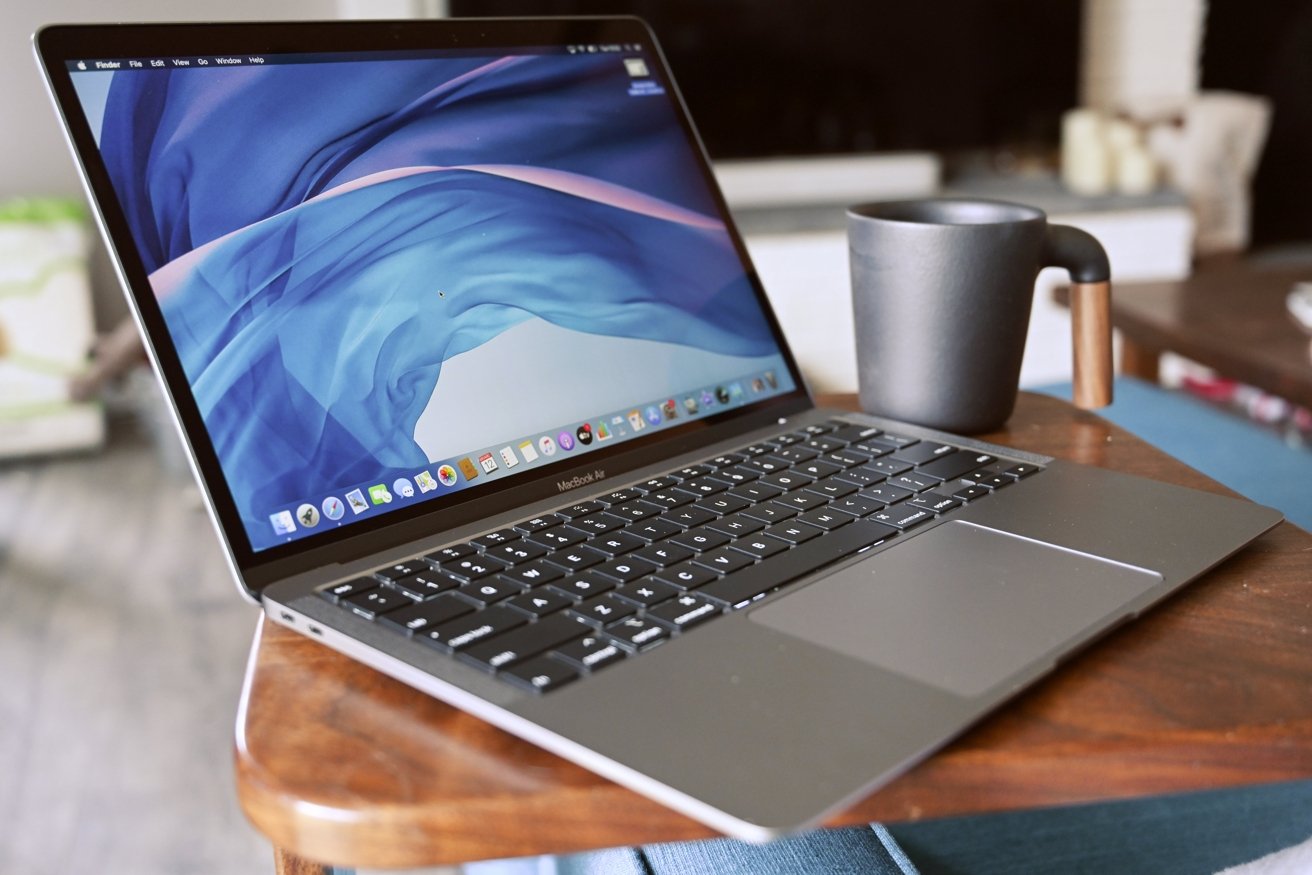 The MacBook Air and 13-inch MacBook Pro both serve as entry-level consumer-grade notebooks in Apple's lineup.
The MacBook Air and 13-inch MacBook Pro both serve as entry-level consumer-grade notebooks in Apple's lineup. Of course, performance will always be important for the 14-inch and 16-inch models. They use more powerful M1 variants with more CPU and GPU core counts, as well as other upgrades that provide more resources for the chip to work.
So, given there's not much variation in peak performance between the 13-inch MacBook Pro and the MacBook Air in using Apple Silicon, what is the difference now?
Weirdly, performance is still a difference. The addition of fan cooling in the MacBook Pro rather than passive cooling in the MacBook Air line means it will run at full speed for far longer before thermal throttling kicks in and makes things slow.
Then you have the more obvious elements, including the physical design differences over thickness and weight, as well as the Air being cheaper. The physicality of a notebook can still be a critical element for users to consider for use in their daily life, but it's not as much as it could ultimately be.
Sure, people who need performance above all else will immediately go for the larger models. They can easily justify getting high amounts of Unified Memory, more CPU cores, and better GPUs for their work.
But for people who just want an Apple-produced notebook, the differences between the 13-inch MacBook Pro and MacBook Air are still there. They're just narrower than they used to be.
How to save on the MacBook Air and MacBook Pro
While retail prices start at $999 on Apple's laptop line, AppleInsider readers can save on nearly every configuration with exclusive coupon code APINSIDER and this cost-saving activation link at Apple Authorized Reseller Adorama. Need help with the coupon? Step-by-step instructions can be found. here.
You can check out the latest MacBook Pro deals and MacBook Air deals 24/7 in our Price Guides.
 Malcolm Owen
Malcolm Owen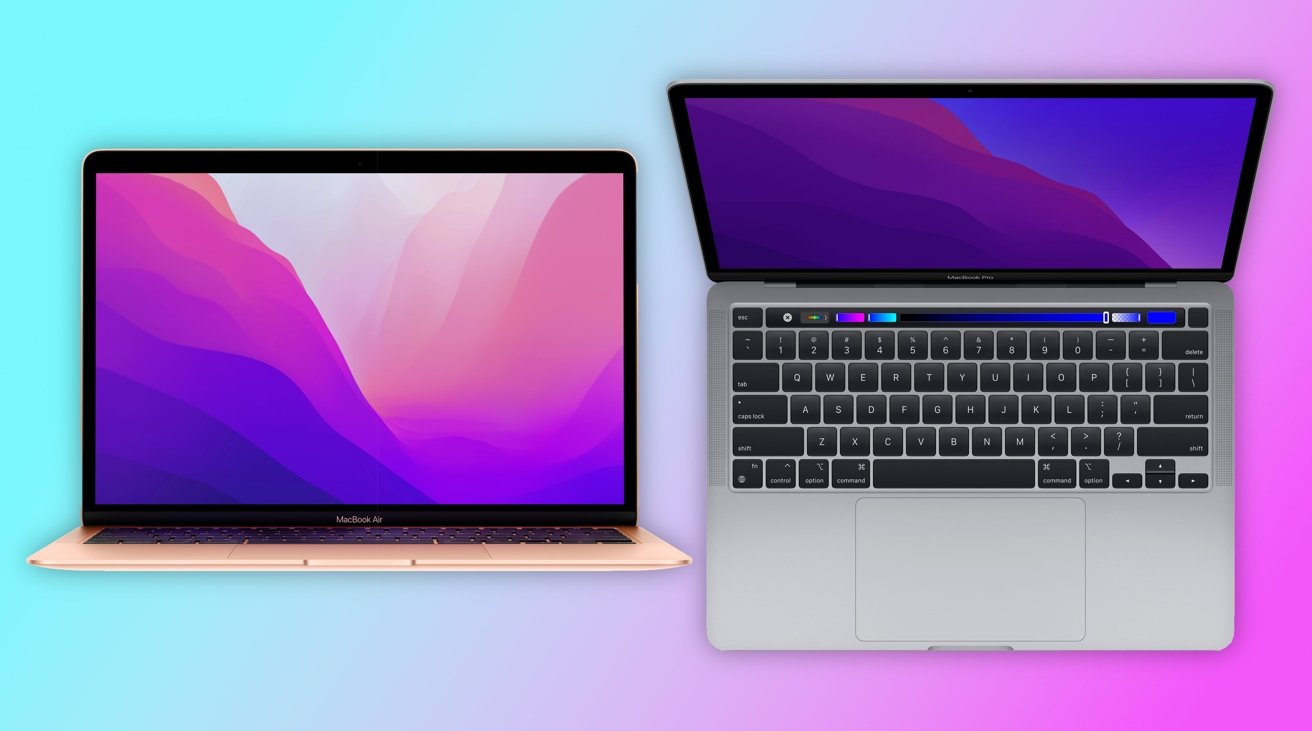
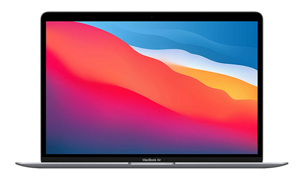

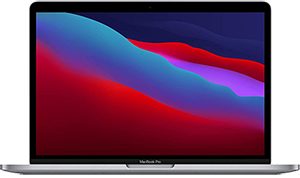









-m.jpg)






 Christine McKee
Christine McKee
 Charles Martin
Charles Martin
 Mike Wuerthele
Mike Wuerthele
 Marko Zivkovic
Marko Zivkovic



 William Gallagher
William Gallagher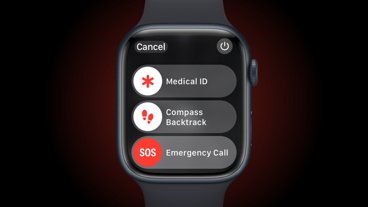


-m.jpg)






2 Comments
"
Absolute nonsense. The MacBook Air always came at a premium price to the MacBook. It was intended for those who wanted the smallest, most beautiful Mac and didn't mind paying the huge extra despite the lower speed. The MBA was niche, high-end, luxury product for most of its history.
The massive, overwhelming advantage is that the M1 MBAs are totally silent. Just as flat screen displays changed the architecture of banks' dealing rooms, the M1 MBA changes the layout of small recording studios etc. - a totally silent laptop as powerful as the maxed-out Power Mac of yesteryear that can even run on a small solar panel, forever. It is a game, wall and location changer.
Remember it can also drive a 6k external display, silently.
Silence is golden. It is also priceless when recording.